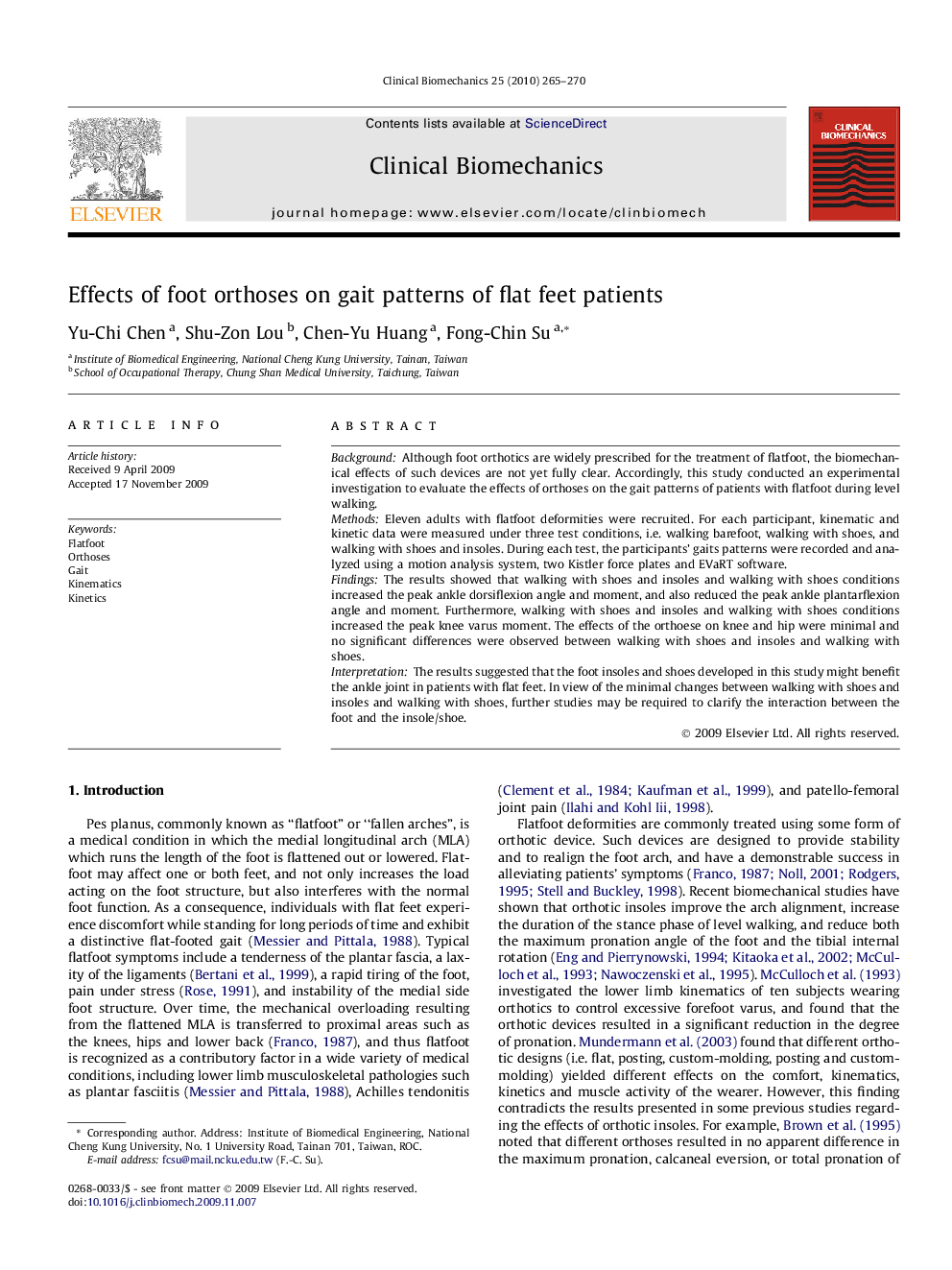| Article ID | Journal | Published Year | Pages | File Type |
|---|---|---|---|---|
| 4051119 | Clinical Biomechanics | 2010 | 6 Pages |
BackgroundAlthough foot orthotics are widely prescribed for the treatment of flatfoot, the biomechanical effects of such devices are not yet fully clear. Accordingly, this study conducted an experimental investigation to evaluate the effects of orthoses on the gait patterns of patients with flatfoot during level walking.MethodsEleven adults with flatfoot deformities were recruited. For each participant, kinematic and kinetic data were measured under three test conditions, i.e. walking barefoot, walking with shoes, and walking with shoes and insoles. During each test, the participants’ gaits patterns were recorded and analyzed using a motion analysis system, two Kistler force plates and EVaRT software.FindingsThe results showed that walking with shoes and insoles and walking with shoes conditions increased the peak ankle dorsiflexion angle and moment, and also reduced the peak ankle plantarflexion angle and moment. Furthermore, walking with shoes and insoles and walking with shoes conditions increased the peak knee varus moment. The effects of the orthoese on knee and hip were minimal and no significant differences were observed between walking with shoes and insoles and walking with shoes.InterpretationThe results suggested that the foot insoles and shoes developed in this study might benefit the ankle joint in patients with flat feet. In view of the minimal changes between walking with shoes and insoles and walking with shoes, further studies may be required to clarify the interaction between the foot and the insole/shoe.
